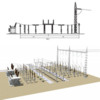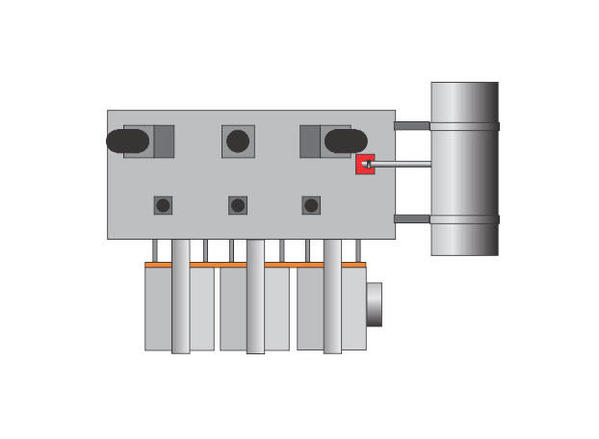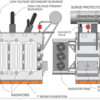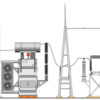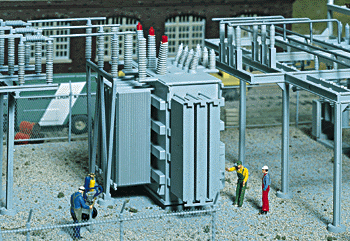I'm starting a new thread on building a medium-sized substation to feed my town and industries. I've been doing research and on another thread talked about finding something that can simulate the large, high-voltage insulators. As for the power transformer, I'd like to use the MTH transformer that's on my UP heavy duty flatcar, but I don't want to use that transformer. I've got an inquiry into MTH's Customer Service Dept to see if I can buy the transformer.
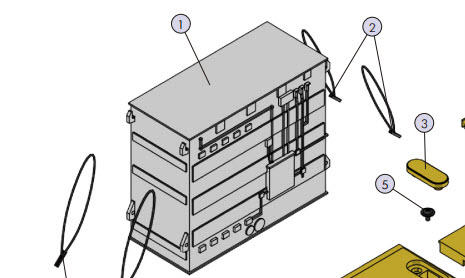
The transformer load has a part number, but it also has an asterisk next to the price of $12.00. The asterisk next to the price means that MTH wants and exchange transformer part before they'll ship a new one. Since I want to keep my depressed center flatcar with its original load, this option doesn't appeal to me. Depending on the answer I may scratchbuild my own. I've got the transformer next to me to take all the critical dimensions and design my own. MTH just wrote back and they CANNOT sell me the transformer separately. So scratch building is the way I'll go. In that case, some of the low relief molded details can no be fully worked out.
Here's a typical, big power-transformer. Notice all the stuff hanging off including the cooling fans. In fact, if you didn't know better, you'd think it was some king of large engine.
For cooling fans, the only thing I could find was a Precision Scale Co. brass cooling fan grill and fan. It could work. I did a major search for other diesel details and came up empty. If anyone knows any please let me know. I'm thinking of buying a beat up HO EMD engine and cutting off the fan shrouds and using them. If I had photoetch capability, I make my own, but I don't so I won't.
In addition to the power transformer, there's lots of other pieces. The basics include bus frames and insulators bringing power leads from the high tension poles, and then carrying three-phase power to the other apparatus in the substation. This included circuit breakers, and reconnectors.
Here's a typical plan layout. I will have to compress distances since real stations are fairly large plots.
Notice that the distance from the incoming bus poles to the transformer bushing is 48 meters. That's 39" in O'scale which is a lot of layout real estate. There's some compact designs that can be applied. I share the drawings I produce as we go on.
Meanwhile, for the last week my laptop is behaving very badly. It's constantly crashing in an unrecoverable manner. The mouse pad is forgetting its settings, loading and unloading files is very slow, and it's just operating badly. If I can't figure it out, it may be time for a new one. It's over 4 years old and I've worn the covering off the keys, so it's had plenty of use. But getting a new one is a pain in the butt since I have lots of programs that will have to be reloaded by hand, including lots of updates. Also, I'm not a big fan of Windows 8. We'll see.
In fact, this is third time I've written this post since it crashed the first two.










